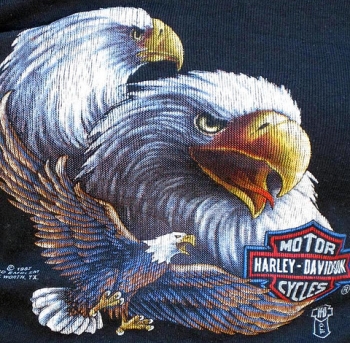Companies invest money in creating logos, ads, marketing materials, packaging, and so on and then wonder why they’re not getting the results they expected -- or they might assume that they can’t get better results. However, had they invested in brand research along the way, their stories could have been quite different.
Branding questions? Create a new market research study, and get the valuable answers you need. As a market research company, we at AYTM are here to help you quickly and easily test brand ideas for your new company, product, service, or academic project. Learn more

It’s safe to assume that you don’t make other types of business decisions without data to justify those decisions, so why would your brand decisions be any different? They shouldn’t be. That’s why it’s so critical that you track your brand’s growth and performance by following the steps provided in Part 1, Part 2, Part 3, Part 4, and Part 5 of the Brand Research Fundamentals series.
With that hard data in hand, you can closely analyze target audiences, growth trends, marketing tactics, brand awareness levels, sales history, and so on, and apply those learnings to your future brand strategy decisions. However, it’s easy to get caught in what I call information paralysis where you have so much data at your fingertips you’re incapable of making a decision. That’s a dangerous place to find yourself in, particularly as it applies to branding because so much of branding is based on consumer emotions and requires subjective analysis in addition to traditional objective research data analysis.
Researching Brand Emotions
You can easily measure and analyze sales data, but how do you measure subjective brand sentiment accurately? How do you measure consumers’ emotional involvement in your brand? Both of these factors are essential to brand and business growth and success, but few companies actually understand how to gather data to guide in the strategic brand decision-making process.

It is a fundamental truth that when consumers are highly emotionally attached to a brand, their loyalty and advocacy of that brand knows no bounds. Harley Davidson brand loyalists provide the perfect example, and as such, the Harley Davidson brand is one of the most powerful relationship brands in the world.
You can’t buy that level of brand emotion through clever marketing messages, but you can create it through brand consistency, persistence, and surrounding consumers with branded experiences where they can choose how they want to interact with the brand. Harley Davidson offers online forums, clubs, events, and much more for enthusiasts to enjoy the brand together. The brand stands for something in consumers’ minds, and that something is very important to them such as freedom, camaraderie, rebellion, and self-expression.
Subjective Brand Research
All of the objective brand research data you collect is incomplete if you cannot tie subjective analysis to it. That’s because consumers don’t always act the way they say they will. Qualitative and quantitative research results about buying propensity and brand preferences can be misleading if they are viewed without subjective context.

In fact, many consumers simply don’t know what motivates them to make buying decisions, particularly when a brand elicits little emotional involvement. Is there a reason why you buy a specific dish washing detergent, or is it just the one you’ve always bought?
Furthermore, research respondents often provide researchers with the answers they think the researchers want to hear or the answers that don’t embarrass them or reveal personal information, thoughts, and feelings. That’s where you need to get creative with your brand research techniques to draw out underlying motivations and feelings from consumers.
Following are several tricks to gather subjective data in a more reliable way than objective research questions might provide:
- Use word association and sentence completion questions to encourage respondents to provide their own words to describe your brand.
- Ranking, sorting, and grouping questions can be used in a multitude of ways to gain insight into consumer brand preferences.
- Analogies offer an excellent way to learn how consumers feel by asking them to compare the brand to unrelated things. For example, ask respondents, “if the brand were a celebrity, who would it be and why?”
- Storytelling works well to draw out underlying emotions and thoughts about the brand. Ask respondents to tell a story about the brand (it could be based on a real experience or fictitious).
- Role-playing can be used to have consumers act like the brand or try to convince a friend to purchase the brand.
The important thing to remember when you’re gathering subjective brand research data is to always ask consumers why they respond to questions and prompts in the way that they do. Look for conscious and subconscious reasons, but don’t lead respondents. You need to let them talk without your influence, which could inadvertently affect their responses.
Brand Research Decision-Making
Your brand research is never done, but it can help you make intelligent decisions rather than assuming you always know what your customers want and need and what the market will bear. If everyone had that kind of knowledge, we’d all be successful billionaires with globally recognized and powerful brands. Until then, there is still brand research to be done, data to gather, emotions to analyze, and decisions to make.
If you missed any of the previous parts of the Brand Research Fundamentals series, you can follow the links below to read them now.
- Brand Research Fundamentals: Part 1 - Brand Development and Strategic Planning
- Brand Research Fundamentals: Part 2 - Brand Creation
- Brand Research Fundamentals: Part 3 - Brand Promotion
- Brand Research Fundamentals: Part 4 - Brand Perception and Equity
- Brand Research Fundamentals: Part 5 - Brand Growth and Change
Images: 1, castawayvintage, dno1967b


.jpeg)

.jpg)

















